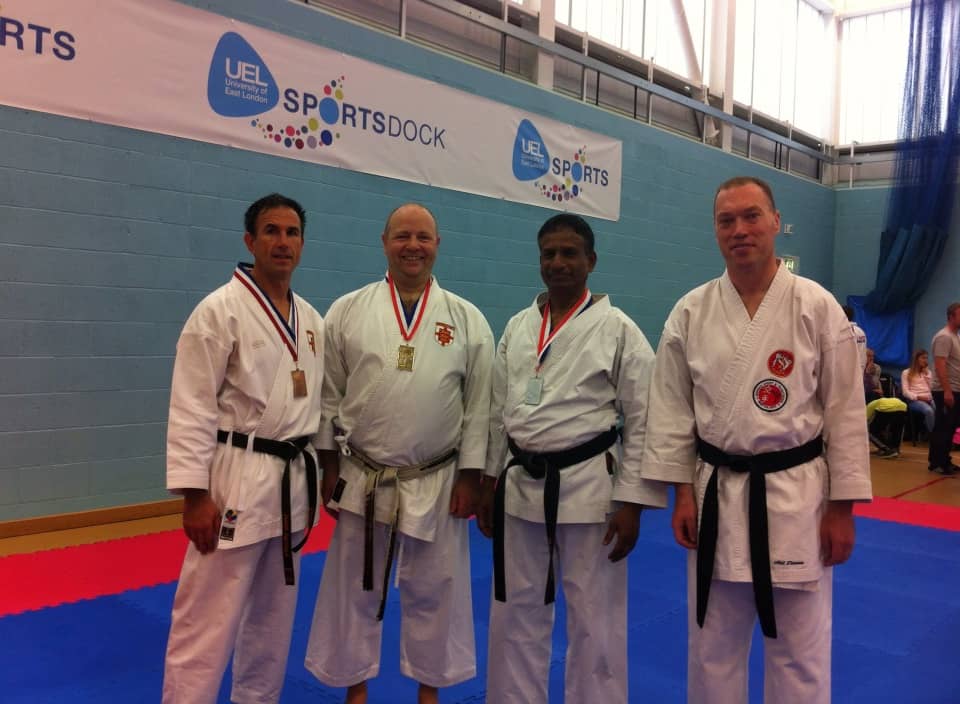 Learning and studying Kata is an important part of karate training. As a form of training it teaches us co-ordination, concentration, develops physical strength, speed, focus, power, breath control and martial skill.
Learning and studying Kata is an important part of karate training. As a form of training it teaches us co-ordination, concentration, develops physical strength, speed, focus, power, breath control and martial skill.
The process of learning kata involves many layers of development. Typically we start by looking at the moves and their basic elements such as the placement of the feet and hands and slowly piece together the sequence until we have learnt the whole kata.
We also look at the bunkai or meaning and application of the moves, it’s important to understand the applications which you are practising – if not, then ultimately you are merely performing movements with your hands and feet, like a dance, but you have lost the essence of the martial art which you are trying to learn.
As we become more confident in the sequence we can start to layer in the correct speed, timing, focus and breathing. It is an ongoing learning process and no matter how long you’ve been studying there are always things which can be improved and new and varied applications to be uncovered.
Performing kata in competition adds a new dimension to the challenge. It takes confidence and self-control to perform before judges, spectators and against the abilities of others. It’s amazing how a kata can be performed 100 times in the dojo correctly but when the additional stresses of competition are added the mind goes blank and competitors forget moves or let the nerves take over and lose their strength and spirit. There are some stringent rules applied to competitors which are phentermine used to judge a winning performance. There are typically 3 – 5 judges who observe the competitor from different angles and award points based on the following;
In a Kata Match, each performance will not be deemed simply good or bad, but will be judged according to the essential elements in two different criteria:
BASIC PERFORMANCE
The following basic points must appear in each performance of a Kata:
1.1. Kata sequence.
1.2. Control of power.
1.3. Control of tension and contraction.
1.4. Control of speed and rhythm.
1.5. Direction of movements.
1.6. Understanding Kata technique.
1.7. Show proper understanding of the Kata Bunkai.
1.8. Coordination.
1.9. Stability and balance.
1.10. Pauses.
1.11. Kiai.
1.12. Breathing.
1.13. Concentration.
1.14. Spirit.
ADVANCED PERFORMANCE
Judges will note the specific important points and the degree of difficulty of the performed
Kata. Judgment will be based on:
a) The mastery of techniques by the contestant.
b) The degree of difficulty and risk in the performance of the Kata.
c) The Budo attitude of the contestant.
Video analysis is always a useful tool in developing and improving kata. What you feel you are doing is often not what you are actually doing and it’s a good way to help focus your training on the areas which most need improving. These videos are from our most recent competition and whilst the katas demonstrated were good enough to win there is, as always, things which could be done better.
Competition is a challenge which doesn’t appeal to everyone – but whether it’s for competition or not, if kata is a part of the training which you undertake then you should aim to incorporate all of these elements to fully develop your skills.
Here’s a video of me performing a kata in competition. This kata helped me to win Gold at this competition, but I’ve still spent time looking at it and analysing how to improve it.
